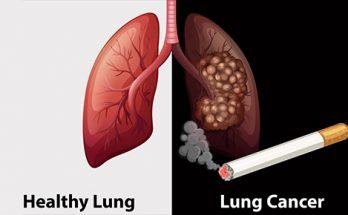Lung cancer treatment depends on the type of cancer (non-small cell lung cancer or small cell lung cancer), stage, and patient preference.
Non-small cell lung cancer
Treatment for non-small cell lung cancer is surgery. The cure rate for all stages of non-small cell lung cancer is 12 percent. The five year survival rate for stage one lung cancer is 70%. The removal of the affected lung is possible if the patient is able to breathe adequately with the remaining lung.
Preoperative chemotherapy is given to patients with stage 3A disease, who are being considered for surgery. Cancer drug therapy prior to surgery can increase survival time.
If the non-small cell cancer can not be removed, radiotherapy can be used alone or in combination with chemotherapy. Current drugs of choice are paclitaxel plus either carboplatin or cisplatin; cisplatin plus vinorelbine; gemcitabine plus cisplatin; carboplatin or cisplatin plus docetaxel. The overall results are disappointing and none of the standard regimens for non-small cell lung carcinoma is clearly superior to the others.
Small cell lung cancer
Treatment of small cell lung cancer is limited. Small cell lung cancer is more virulent, does not respond well to surgery, and metastasizes (spreads) more quickly than non-small cell lung cancer.
If the disease is in an early stage (lung cancer stage one or two) chest radiotherapy and chemotherapy (cisplatin and etoposide) are given to the patient. Median survival time with therapy is 15.1 months.
If the disease is in the later stages (stage 3A, 3B or stage 4 lung cancer) standard treatments include combination chemotherapy (cisplatin or carboplatin plus etoposide), or combination of irinotecan and cisplatin. Prophylactic (preventative) cranial irradiation (radiotherapy to the brain) is administered to patients in complete remission to decrease the risk of the spread of the disease to the brain.



